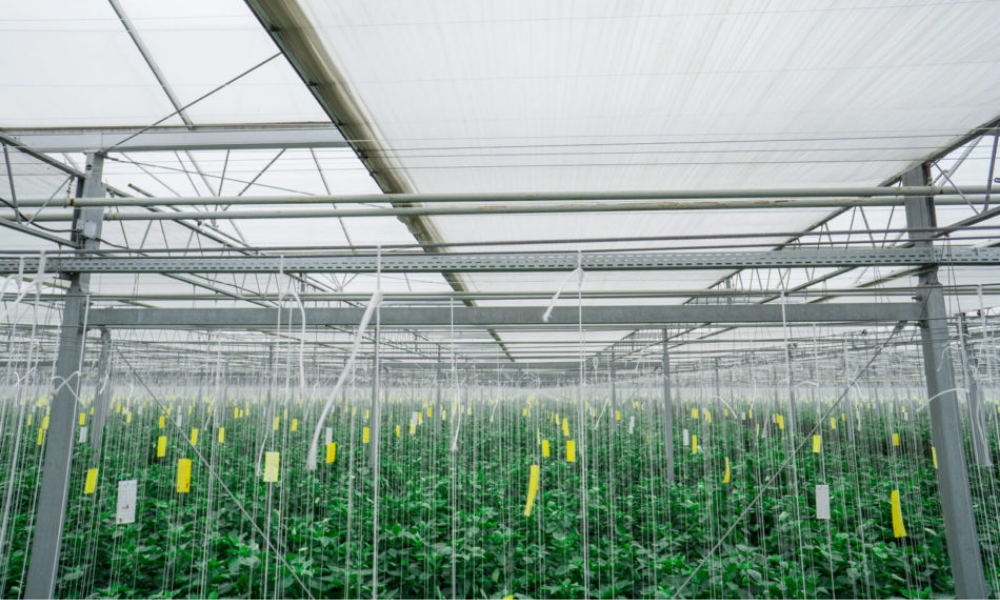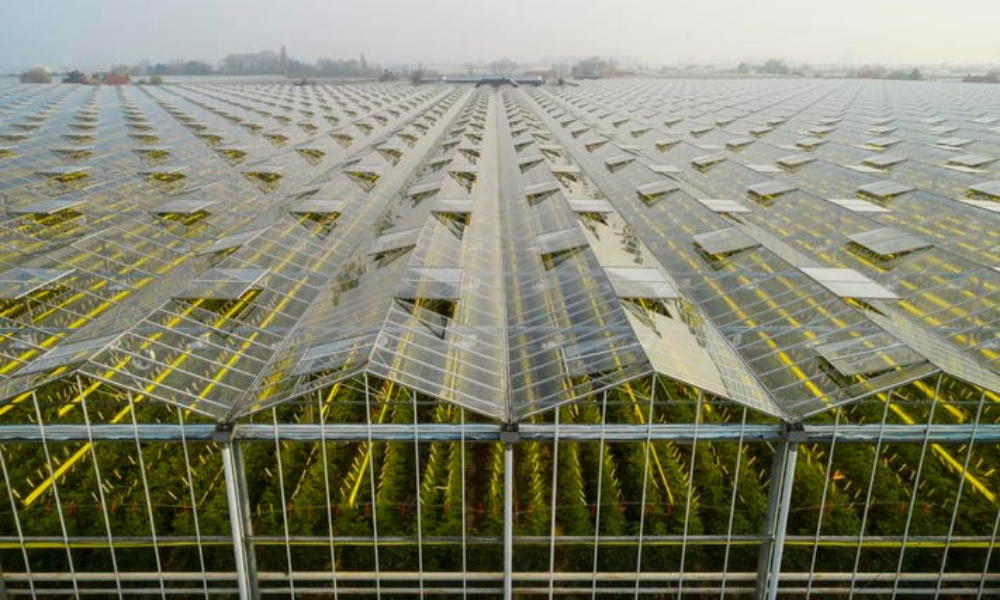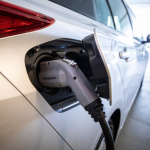Greenhouses are an integral part of any agricultural landscape. They allow plants to grow and thrive, even in the harshest climates.
But what happens when you need more than just a greenhouse? If you’re not using hydroponics or aquaponics, then your greenhouses will be less efficient than they could be. To increase the efficiency of your greenhouse, you should consider using energy-saving technologies.
The province’s greenhouses are vital for supplying food, cannabis, and flowers, primary revenue earners. At the same time, these operations use a lot of electricity, so finding ways to be more energy efficient will become more crucial as Ontario grows.
Along with existing energy-saving solutions that greenhouse operators may implement right away, several next-generation developments have the potential to make greenhouses even more energy efficient in the future.
Here’s what growers should keep in mind right now to optimize their energy use and what they should keep an eye on in the future.
Read more: Canadian Government Announced Funding for Farmers to Fight Climate Change
What Technology Is Used in a Greenhouse?
In a typical greenhouse, crops are grown in soil in rows on benches or the ground. The air temperature and humidity are controlled by a ventilation system that pulls air in from outside and circulates it throughout the structure.
Read more: Low Carbon Economy Challenge
Lighting is also an essential factor, especially in winter when natural sunlight is scarce. Greenhouses are often equipped with high-pressure sodium (HPS) lamps, which emit light in the yellow and red spectrum beneficial for plant growth.
Heating is another joint greenhouse function, especially in colder climates. The most common type of heating system is a forced-air heater that burns natural gas or propane. These heaters are typically located at one end of the greenhouse, and the air is circulated throughout the structure using fans.
Watering systems are also used in greenhouses, either manually or with automated irrigation.
How to Save Energy with Greenhouse Technology?
There are many ways to save energy in a greenhouse, but some of the most effective include:
- Improving insulation: This can be done by adding more insulation to the walls and ceiling and using insulated doors and windows.
- Upgrading the ventilation system: Installing a more efficient ventilation system will help to reduce the amount of energy needed to circulate air throughout the greenhouse.
- Using energy-efficient lighting: Switching to LED lights or installing reflective surfaces can help to reduce the amount of energy needed for lighting.
- Improving the heating system: A more efficient heating system will use less fuel and better temperature control.
- Installing automatic controls: Automating the greenhouse environment will help to reduce energy use by maintaining optimal conditions.
What Is Next-Generation Technology Being Developed for Greenhouses?
Several next-generation technologies are being developed that have the potential to make greenhouses even more energy-efficient.
Some of these include:
LED Grow Lights Are Increasingly the Norm
Lighting represents the most significant opportunity for energy reduction in most greenhouses. High-pressure sodium (HPS) lights are used in many greenhouses today but LED grow lights can save between 35 and 55 percent more energy, and they also last longer, saving money on upkeep.
LEDs can also give producers more flexibility regarding how much and when they use light. “Automated control systems can assist producers in modifying the intensity of lights and utilizing different colors to stimulate specific plant responses,” says Mike Dixon, a professor and controlled environment researcher at the University of Guelph. “For example, fruits and seeds have different metabolic requirements during the reproductive stage and react to varying spectral quality.”
Lighting sensors integrated into a greenhouse can assist producers in optimizing LED lighting levels based on sunlight levels. Some cannabis farmers, for example, can use environmental sensors to satisfy their daily light interval goals.
Solar Technology
Although the technique isn’t yet commonly used in Ontario, researchers worldwide are investigating ways to incorporate solar photovoltaics into roof and shade screens. These panels might theoretically gather light to generate the correct light spectrum for crop cultivation, doing double duty for greenhouse owners, and generating electricity from the sun. Solar technology is also being investigated as a way to store more energy for ground-source heat pumps.
Drives with Varying Frequencies
Variable frequency drives (VFDs) improve the efficiency of motor-driven equipment like fans and pumps. These drives change the speed of the motor equipment based on the load. In other words, they can slow down or speed up, allowing them to consume only the energy required for the activity at hand rather than operating at total capacity all of the time.
If exhaust fans in a greenhouse, for example, do not need to run at full speed all day, VFDs can accommodate their varied needs, lowering total energy use. VFDs can be utilized in all greenhouses and can save up to 12% on energy when used on pumps and fans. When replacing your fans, consider that high-efficiency fans are a good option.
Microgrids and Better Batteries
Growers may soon have additional chances to store the energy they produce through solar technology, making their greenhouses more self-sufficient as battery systems improve.
Interconnected microgrids are also being investigated by researchers in Ontario and elsewhere across North America, particularly for places that use a lot of grid-supplied electricity (such as Essex County in Ontario). These renewable energy-focused microgrids combine solar photovoltaics, generators, storage units, and microturbines to provide another stable, long-term power source for neighboring greenhouse activities.
Integrated Environmental Controls
It is critical to properly manage lighting, heating, cooling, and ventilation when producing high-quality plants. Environmental control systems that are integrated can help, and VFDs, exhaust fan speeds, shade, thermal curtain operations, and heating and ventilation equipment can all be controlled by an integrated controller. According to growers, they can also be used to operate zone pumps, mixing valves, and irrigation systems.
Artificial Intelligence and Additional Sensors
Better sensors, artificial intelligence (AI), and machine-learning technology are all being developed rapidly. These advancements can be used to develop systems that automatically adjust conditions in a greenhouse as needed. For example, a system might detect when a crop is ripening and lower the temperature or increase humidity to prolong shelf-life.
The combination of solar, storage and AI technology has the potential to make greenhouses more autonomous, meaning they would require less human intervention. Growers would still need to plant and harvest their crops, but the greenhouse environment could be managed with less input.
These types of systems will likely become more common and play a more significant role in greenhouse operations.
Variable frequency drives (VFDs) can save energy in greenhouses by slowing down or speeding up motor-driven equipment like fans and pumps according to the load. Solar technology is also being investigated as a way to store more energy for ground-source heat pumps.
Researchers are investigating microgrids and better batteries to provide a stable, long-term power source for neighboring greenhouse activities.
Environmental controls that are integrated can help manage lighting, heating, cooling, and ventilation when producing high-quality plants. Artificial intelligence (AI) and machine-learning technology are also being developed to create systems that automatically adjust conditions in a greenhouse as needed.
Conclusion
In this article, we have seen how to save energy with greenhouse technology. For example, using hydroponics and aquaponics can reduce the need for artificial light or heating in a greenhouse. With these methods of growing plants, you will be able to cut your electricity bill by as much as 50%. You also won’t have to worry about your plants getting too hot or cold because the water will regulate their temperature.
If you have a lot of lands, you could also consider growing food in a greenhouse. It would allow you to get fresh fruits and vegetables all year round without worrying about the weather outside. Greenhouses can also be used to grow flowers or other plants that wouldn’t be able to survive in the wild.
Overall, greenhouse technology is a great way to save energy and money, and it can also help you grow more food or flowers than you ever thought possible. So if you’re looking for a way to be more green, consider investing in a greenhouse.









Leave a Reply